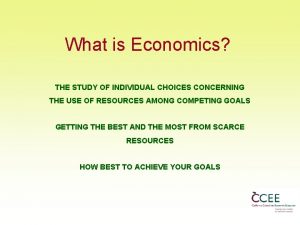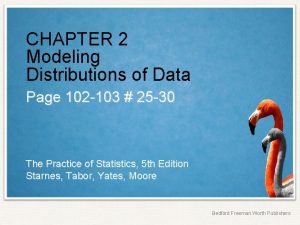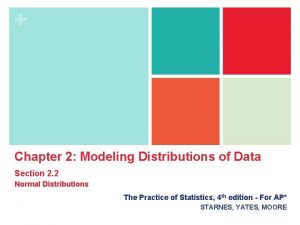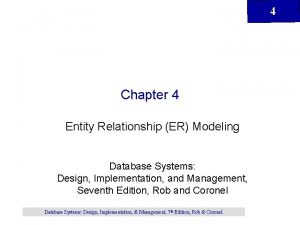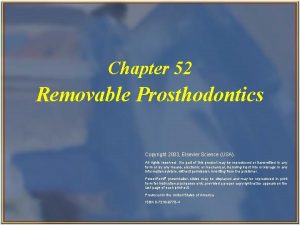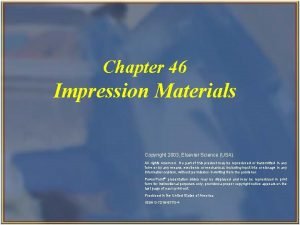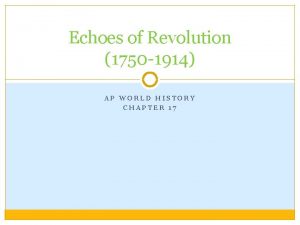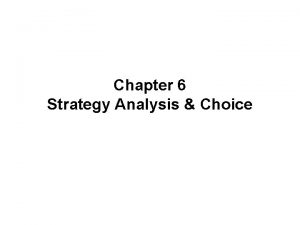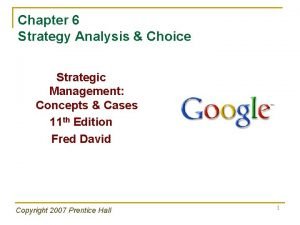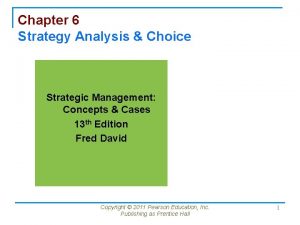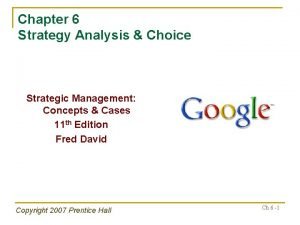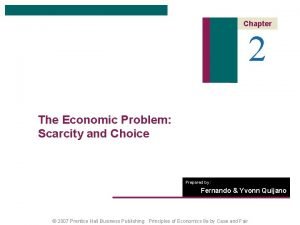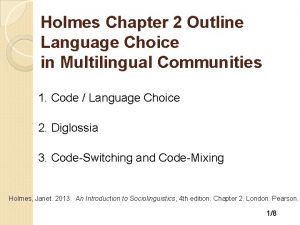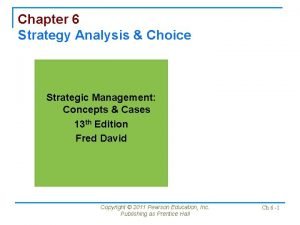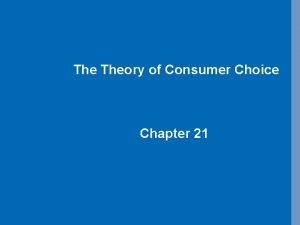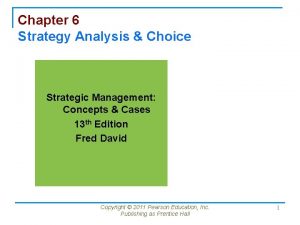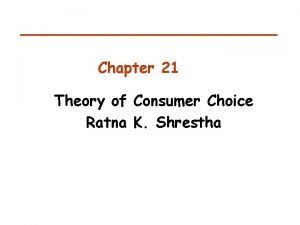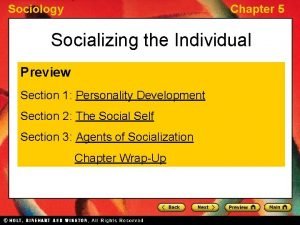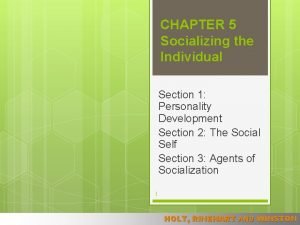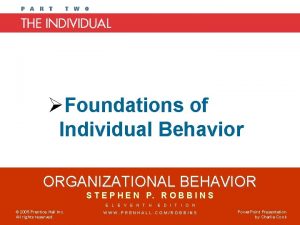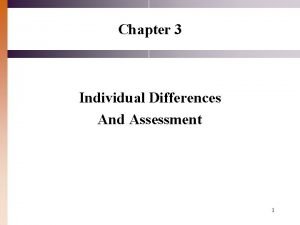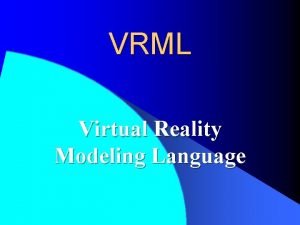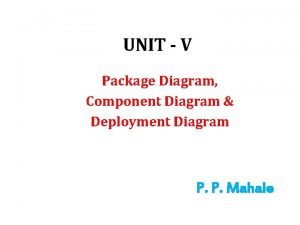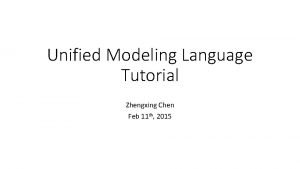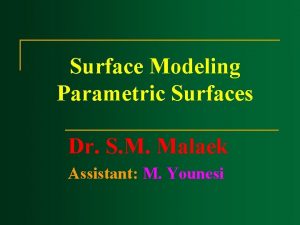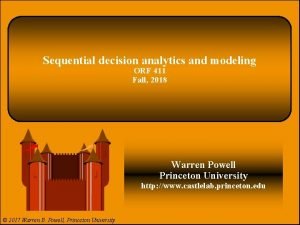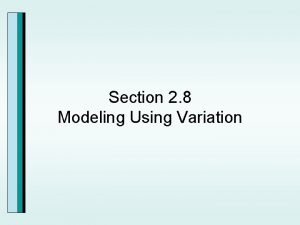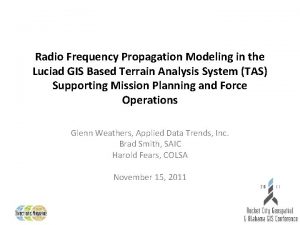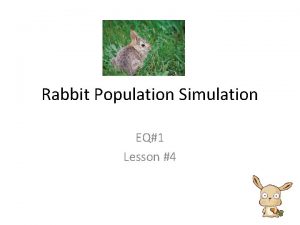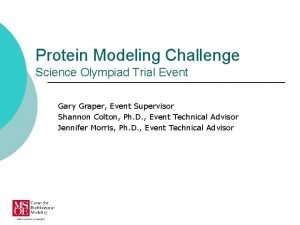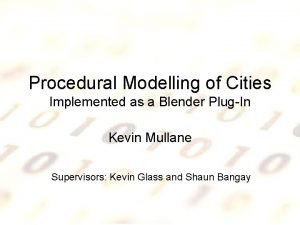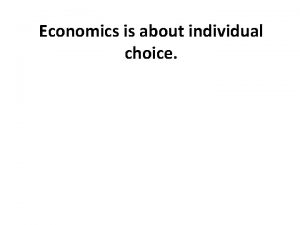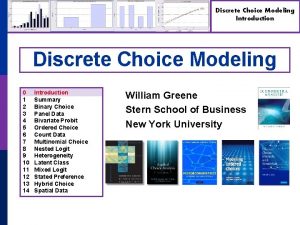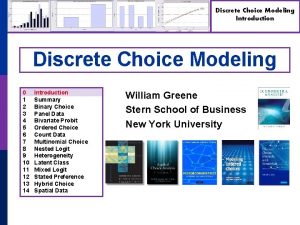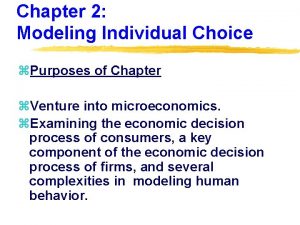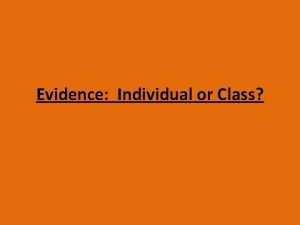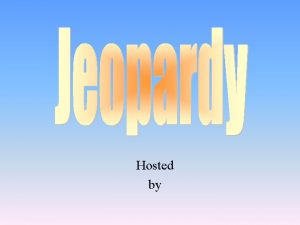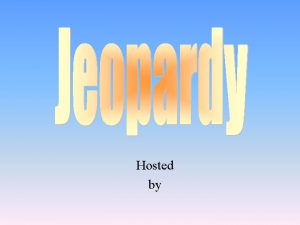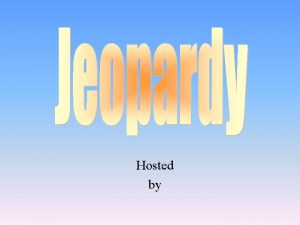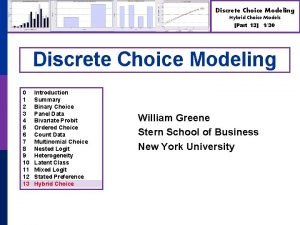Modeling Individual Choice Chapter 2 Individual Choice in















































- Slides: 47

Modeling Individual Choice Chapter 2

Individual Choice in Buying Goods: Theory • Individuals want to be as happy as possible. Individuals gain happiness from the consumption of goods / services. The more consumption the better, at least to a satiation point. The happiness we gain becomes less and less as we consume more and more of any good. The “Law of Diminishing Marginal Utility” 2

Robinson. Crusoe- Why?

Assumptions • • No scarcity No production is necessary No future or sense of time passing No risk or uncertainty

Definitions • Utility - Satisfaction • Consume - the act of deriving utility • Note: not always used up. – Consume pizza - gone – Consume art - still there

Goods • Tangible, can be stored – Ex. Food, sneakers • Services - intangible, cannot be stored – Ex. Haircut

More Assumptions • People know what gives them utility, and can rank items by the utility they receive from an item • Rational behavior - utility maximizing • Assumption - people are rational • Rational households consume goods and services in order to derive the maximum utility

New assumption • Ceteris paribus, the utility one derives from the consumption of a good decreases with each successive unit consumed • Ex. Dying of thirst 1 st sip - much utility • 2 nd sip - less so • eventually - no utility

More clearly stated: • Ceteris paribus, the utility one derives from the consumption of a good decreases with each successive unit consumed or • one experiences diminishing marginal utility

• We can make up a unit of utility • We’ll call it a util • Eventually, as you keep eating you get to the point where you derive no satisfaction • At this point, MU=0

M&Ms

Utility maximization, marginal utility / total utility / diminishing marginal utility • • • • You are given the following information about the utility value of Big Mac's (assuming the burgers are free) number of Big Mac's MU total utility 1 100 X 2 90 Y 3 Z 270 4 5 P 5 0 Q 6 -10 R Use the information above to answer questions 1 -7 keeping the Law Of Diminishing Marginal Utility in mind 1. - the value of X would be _____ 2. - the value of Y would be _____ 3. - the value of Z would be _____ 4. - the value of P would be _____ 5. - the value of Q would be _____ 6. - the value of R would be _____ 7. - a rational consumer would consume HOW MANY Big Mac's ____ = satiation 12

Utility maximization, marginal / total utility • • • • You are given the following information about the utility value of Big Mac's (assuming the burgers are free) number of Big Mac's MU total utility 1 100 X 2 90 Y 3 Z 270 4 5 P 5 0 Q 6 -10 R Use the information above to answer questions 1 -7 keeping the Law Of Diminishing Marginal Utility in mind 1. - the value of X would be __100___ 2. - the value of Y would be __190___ 3. - the value of Z would be ___80___ 4. - the value of P would be __275___ 5. - the value of Q would be __275___ 6. - the value of R would be __265___ 7. - a rational consumer would consume HOW MANY Big Mac's _4_ = satiation 13

MU’s From 3 Different Activities

Given no scarcity • I will consume until I satiate my want for good 1 – so I will consume until the marginal utility = 0 utils (Bliss Point). The same would be true for good 2, 3, … Or until • MU 1 = MU 2 = MU 3 = … = MUn = 0. 15

If time were not scarce • You could think of the decision rule as MU 1 = MU 2 = MU 3=…= MUn = 0 Unitoftime

Time IS Scarce • 7 hours of play – MU=50 • 3 hours of study – MU=70

How to optimize • The optimal allocation is the one which maximizes utility • Do another hour of the choice which gives you the higher marginal utility

A new allocation • 6 hours of play – MU=60 • 4 hours of study – MU=60

2. 5. 2 Your Decision Rule under Scarcity MU 1 = MU 2 = MU 3=…= MUn = X Unit • Where X can be >0 • How do people maximize utility in the face of scarcity? • Answer: We balance at the Margins!!

2. 6 Relaxing Factors of Production • Stuff doesn’t just appear like magic for you to consume • Endowment- all the natural and human resources from which all goods and services are produced • Endowment may not be fixed, but it is finite, so scarcity is an issue

On Factors • Factors of production – basic inputs we use to produce, such as • Natural resources – in, on or around the earth • Labor- human work • Together, these first two are called the natural endowment

Capital • physical capital (machines) • human capital (skills, innate and acquired).

Allocation, Techniques, and Technology • Allocated – we decide how to use the factors • Process of production – transforming the inputs into an good, or service • Technique- one way of combining inputs Technology – set of all available techniques

Types of techniques • Labor-intensive technique- uses primarily labor • Capital-intensive technique – uses primarily capital • Firms usually choose the cheapest way

Scale of Production • Refers to the size of the process of production • Returns to scale – how does a change in scale affect output? • Ex. If double inputs – less than doubles the output –decreasing returns to scale • If double inputs – doubles the output – constant returns to scale • If double inputs - more than doubles the output – increasing returns to scale • We assume decreasing returns to scale

Marginal Productivity • The additional output that comes from an additional unit of input is called the marginal product (MP) • While MP can increase for a while, It will eventually diminish • If inputs were free, to maximize production you would use inputs until MP=0 for all inputs

The Law of Diminishing Returns • The Law of Diminishing Returns – as a firm uses more and more of a given input such as labor, ceteris paribus on the other inputs, there will come a time when the marginal product of labor will decrease (i. e. Diminishing Marginal Product of Labor).

Value from the marginal product – V • So far, we have two independent rules: • MU 1=MU 2=MU 3=…=MUn=0 (consumption of free goods) • MP 1= MP 2 = MP 3=…=MPn=0 (use of free inputs) • Now we need to bridge the two

Labor (HRs) Marginal Product Total Product (MP) Rabbits 1 1 1 2 2 3 3 3 6 4 2 8 5 1 9 6 0 9

Marginal Utility Schedule Rabbit 1 st 2 nd 3 rd 4 th 5 th 6 th 7 th 8 th 9 th MU 100 90 80 70 60 50 40 30 20

Calculating V (Marginal Product) Labor Rabbits and MU Marginal Total Utility Product 100 1 st 1@100 2 nd 2@90+3@80 170 270 3 rd 4@70+5@60+6@50 180 450 4 th 7@40+8@30 70 520 5 th 9@20 20 540 6 th 0 0 540

V schedules

Decision rule

Complexity #1 – the Present Versus the Future • Consumers: Should I buy and/or work now or later (existence of interest on savings, investment in human capital)? • Firms: Should I expand my physical capital by buying this machine (trading current costs versus future benefits)?

2. 7 The Future & Choice • Intertemporal - across time • You have to decide now about things that will have utilities in the future • Ex. $100 now or a year from now

Discount Rate • The Discount Rate – the rate, in percentage terms, that we are willing to trade off money received one year from now versus money received today. • Equivalent amounts received today and in the future are worth more today – need to discount future amounts.

The Discount Rate: An Example • Suppose you have a choice between $300 today and a higher amount next year. Suppose as well that you decide that you’re indifferent between $300 today and $360 next year. • Your discount rate = [($360 $300)/($300)]x 100% = 20% 38

Characteristics of the Discount Rate • Consumers – depends upon different individual’s utility or preferences. – High Discount Rate: devalues the future sharply, “wants it now”. – Low Discount Rate: more willing to forego the present for the future. • Firms – the market interest rate is their ultimate discount rate. 39

2. 7. 10 Should I go to college?

Explanation • • C – College W – work I - Investment cost R – Return • Doesn’t have to measured in dollars

College Demographics • Why is college full of 18 -22 year olds? Opportunity cost is higher for older students • Retirees discount the future more because they have less time left

PV=Present Value • When we relax our assumption of no future, then the rule becomes PV 1=PV 2=…=PVn

Incorporating Risk in Economic Decisions Risk & uncertainty • We develop expectations of unknown events – our best guess of what we think will happen, then act upon those (right or wrong). • We practice risk aversion – of different events with the same expected return, we prefer less risk. 44

Complexity #2 – Risk and Uncertainty • Key Issue: future is unknown, affects economic decisions. • Risk – unknown events to which we can attach a probability. • Uncertainty – absolutely un-thought of events which may end up occurring. • Uncertain events which occur become risky events. 45

Building risk into the decision rule • All utilities should be looked at as expected utilities because of risks and uncertainties EPV 1=EPV 2=…=EPVn • EPV parachuting <EPV 2 movie • NO PARACHUTING

Uncertainty and Choice • Advertising – product will bring great utility Shape our perceptions –beauty standards Eating disorders – more prone if high discount rate and low perception of risk
 Helen c erickson
Helen c erickson Dimensional modeling vs relational modeling
Dimensional modeling vs relational modeling Good choice or bad choice
Good choice or bad choice Individual choice
Individual choice Chapter 2 modeling distributions of data
Chapter 2 modeling distributions of data Chapter 2 modeling distributions of data
Chapter 2 modeling distributions of data Cardinality and connectivity
Cardinality and connectivity Chapter 56 oral and maxillofacial surgery multiple choice
Chapter 56 oral and maxillofacial surgery multiple choice Introduction to prosthodontics
Introduction to prosthodontics Indication of removable partial denture
Indication of removable partial denture Syneresis and imbibition
Syneresis and imbibition Chapter 37 vital signs and measurements
Chapter 37 vital signs and measurements Ap world history chapter 17 multiple choice questions
Ap world history chapter 17 multiple choice questions Dental hand instruments chapter 34
Dental hand instruments chapter 34 Chapter 6 strategy analysis and choice
Chapter 6 strategy analysis and choice Strategic analysis and choice
Strategic analysis and choice Chapter 6 strategy analysis and choice
Chapter 6 strategy analysis and choice Strategic management chapter 6
Strategic management chapter 6 The economic problem of scarcity
The economic problem of scarcity Language
Language Predisation
Predisation Input stage in strategic management
Input stage in strategic management Ap statistics chapter 7 and 8 test answers
Ap statistics chapter 7 and 8 test answers Budget line and indifference curve
Budget line and indifference curve Chapter 5 elasticity and its application multiple choice
Chapter 5 elasticity and its application multiple choice Strategic analysis and choice
Strategic analysis and choice Ratna k. shrestha
Ratna k. shrestha Chapter 5 socializing the individual
Chapter 5 socializing the individual Sociology chapter 5 socializing the individual
Sociology chapter 5 socializing the individual Chapter 20 civil liberties protecting individual rights
Chapter 20 civil liberties protecting individual rights Foundations of individual behavior
Foundations of individual behavior Chapter 3 individual assessment
Chapter 3 individual assessment Chapter 20 civil liberties protecting individual rights
Chapter 20 civil liberties protecting individual rights Chapter 20 civil liberties protecting individual rights
Chapter 20 civil liberties protecting individual rights Virtual reality modeling language
Virtual reality modeling language Plasma modeling software
Plasma modeling software Common modeling techniques of deployment diagram
Common modeling techniques of deployment diagram Unified modeling language tutorial
Unified modeling language tutorial Web application threat modeling
Web application threat modeling Parametric surface modeling
Parametric surface modeling System modeling in software engineering
System modeling in software engineering Simulation kelton
Simulation kelton Sequential decision analytics and modeling
Sequential decision analytics and modeling Modeling using variation calculator
Modeling using variation calculator Rf propagation modeling software
Rf propagation modeling software Modeling population growth rabbits answer key
Modeling population growth rabbits answer key Science olympiad protein modeling
Science olympiad protein modeling Blender procedural generation
Blender procedural generation



